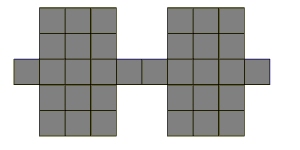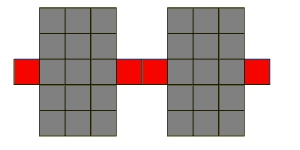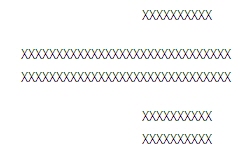| Visual Basic (Declaration) | |
|---|---|
Public Function New( _ ByVal flags As LineRemoveCommandFlags, _ ByVal minimumLineLength As Integer, _ ByVal maximumLineWidth As Integer, _ ByVal wall As Integer, _ ByVal maximumWallPercent As Integer, _ ByVal gapLength As Integer, _ ByVal variance As Integer, _ ByVal type As LineRemoveCommandType _ ) | |
| Visual Basic (Usage) |  Copy Code Copy Code |
|---|---|
| |
| C# | |
|---|---|
public LineRemoveCommand( LineRemoveCommandFlags flags, int minimumLineLength, int maximumLineWidth, int wall, int maximumWallPercent, int gapLength, int variance, LineRemoveCommandType type ) | |
| C++/CLI | |
|---|---|
public: LineRemoveCommand( LineRemoveCommandFlags flags, int minimumLineLength, int maximumLineWidth, int wall, int maximumWallPercent, int gapLength, int variance, LineRemoveCommandType type ) | |
Parameters
- flags
- Flags that determine the behavior of the line removal process.
- minimumLineLength
- Minimum length of a line considered for removal. Lines less than this length are not removed. If the LineRemoveCommandFlags.UseDpi flag is set, units are in thousandths of an inch, otherwise units are in pixels.
- maximumLineWidth
- Maximum average width of a line that is considered for removal. Lines that are greater in average width are not removed. If the LineRemoveCommandFlags.UseDpi flag is set, units are in thousandths of an inch, otherwise units are in pixels.
- wall
- Height of a wall. Walls are slices of a line that are too wide to be considered part of the line. Examples of walls include a character that a line passes through or a perpendicular line. If the image contains lines that pass through characters, set Wall to be equal to or a little larger than MaximumLineWidth. If the LineRemoveCommandFlags.UseDpi flag is set, units are in thousandths of an inch, otherwise units are in pixels.
- maximumWallPercent
- The maximum number of wall slices (expressed as a percent of the total length of the line)
that are allowed. A line consists of wall slices and non-wall slices (see description of Wall). This parameter specifies
that maximum number of wall slices (expressed as a percent of the total length of the line) that are allowed. Lines
that have a wall percent that is larger than maximumWallPercent will not be removed. For example, consider the line
below that is 10 pixels in length, and 1 pixel in height in some places, and five pixels in height in other places.

Setting minimumLineLength to 10 pixels and wall to four pixels will identify the line below as a candidate for removal. Note that the wall percent for this line is 60% (because six of ten line slices are walls). If maximumWallPercent is 80 then the line will be removed (actually, the pixels marked as red will be removed). If maximumWallPercent is 30, then the line will not be removed.
- gapLength
- Maximum length of a break or a hole in a line. This can be used to remove dotted lines, dashed lines, or lines that have breaks due to scanning. If the LineRemoveCommandFlags.UseDpi flag is set, units are in thousandths of an inch, otherwise units are in pixels. This parameter is valid only if the LineRemoveCommandFlags.UseDpi flag is set.
- variance
- Amount of width change that is tolerated between adjacent line slices.
If the LineRemoveCommandFlags.UseDpi flag is set, units are in thousandths
of an inch, otherwise units are in pixels. This parameter is valid only if the LineRemoveCommandFlags.UseVariance flag
is set. For example, the following horizontal line is 30 pixels in length (X represents a pixel)

If variance is 2 pixels (i.e. tolerate width changes of 2 pixels or less), the first 10 columns and the last 10 columns of the line will be removed. The middle 10 columns will be unchanged. This helps preserve characters that intersect a line that is being removed. - type
- Flag that indicates which lines to remove.
Run the LineRemoveCommand on an image.
| Visual Basic |  Copy Code Copy Code |
|---|---|
Public WithEvents lineRemoveCommand_S2 As LineRemoveCommand | |
| C# |  Copy Code Copy Code |
|---|---|
public void LineRemoveConstructorExample() | |
Target Platforms: Microsoft .NET Framework 2.0, Windows 98, Windows NT 4.0, Windows Millennium Edition, Windows 2000, Windows XP Home Edition, Windows XP Professional, Windows Server 2003 family




